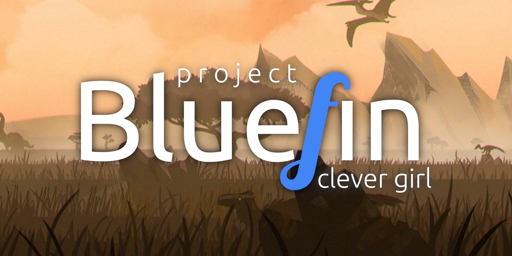After getting a new laptop with win 11 installed, and having to run all the tweaks to make it less obnoxious and disable all the annoyances, I started getting adds pop up in the corner after an update and decided enough was enough. I was forced to pay for that shit and it’s serving me ads? Fuck off.
So I just installed Bluefin and it’s been absolutely awesome. The things they have set up by default are pretty wonderful. Gnome is up with useful extentions to start with so I didn’t have to bother tweaking it to my liking. There is also a KDE based version called Aurora, and the famous gaming spin called Bazzite has both KDE and Gnome versions. There is even a command that lets you easily switch between all the different ublue flavors.
It’s an immutible distro, so it has a base you can’t easily change, but it relies on flatpaks, appimages, homebrew, podman/docker, and distrobox for all the user apps you want, all set up to work by default. The gnome software center is populated by flatpaks, for example. Almost all of the sensible default apps are flatpaks that you can easily uninstall if you don’t want them. And it keeps all of this up-to-date in the background, it checks weekly, and you just restart when convenient to upgrade. The last successful linux distro I installed and stuck with was debian with flatpaks, so I could have a stable base with more up-to-date apps, so it’s a paradigm I like.
There is no traditional package manager unless you install one via distrobox, but flatpak and homebrew cover almost everything most people could want, really.
Want to install jellyfin media server or the ARR stack? Just open up podman-desktop and look for a docker images and then follow a set up guide. Want some command line bling? They have a custom command that installs a bunch of useful terminal apps from homebrew. The bluefin team basically listens to the userbase and then adds whatever they ask for by default if they can get it working, which includes a lot of peripheral support. The results are fantastic.
Previously I was messing around with NixOS, and I like how that works, but I quickly ran out of time to set up my own computer and kind of lost steam messing with it. The ublue distros offer similar functionality: you can create your own custom setup and make it wasy to clone, but you don’t have to bother with that to get a usable experience. It’s usable by default.
It doesn’t support dual booting, because they are a small team and don’t want to have to do tech support whenver windows screws up the boot manager, so if you want to install it and don’t want to wipe your windows install you’ll need a install on a seperate drive (an external drive works) and switch between installs when you boot up. It’s a little more annoying, but it’s a cleaner way to do things.
I’ve never had a linux install be this trouble free and sensibly set up by default. I’m very impressed and would recommend to anyone thinking of switching.




Have to agree with OP.
I’m typing this out on a Bazzite PC. Before, I was using Nobara 40 and it too just worked. But, I wanted to experience the Steam Deck console mode and made the switch. Most of what I installed on Nobara was Flatpaks but I also like having other choices like Podman, Homebrew and Distrobox (which I use for making a Windows VM). Also, I like the (slower) update release schedule with Bazzite vs rolling updates Nobara has (I was constantly getting notified to run updates, which was annoying me). My original idea for my PC was to use ChimeraOS to make console-ized PC, so I just went back to that idea but using Fedora instead. I think with Nobara 41, it now has a Steam Deck console mode, but I think I’ll stick with Bazzite for the foreseeable future.